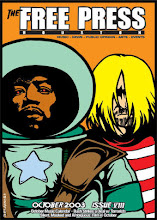Brooklyn's Finest
I've never thought of Antoine Fuqua as some kind of great director but Brooklyn's Finest has changed my train of thought. Fuqua has been what you would call a not so subtle director (hello? Training Day much less Tears of the Sun), yet BF redefines the police action genre. Even in his coolest film The Shooter Fuqua didn't show the kind of chops on display here.
A quartet of actors give career defining performances. Ethan Hawke has traveled down the path of urban corruption before (What Doesn't Kill You) as has Wesly Snipes (New Jack City) as has Richard Gere (Internal Affairs) and ditto Don Cheadle (Traffic). Supporting turns by Will Patton and Ellen Barkin and Lili Taylor and Brian F. O'Byrne are well defined and a powerful compliment to the main actors. Basically everyone in the cast is on the take in some manner or other. The script by Michael Martin goes for full on realism while offering plot twists you never see coming. Everyone gets their just desserts, so to speak, and it's not always pretty.
Most noticeably Fuqua cross cuts (once in the second act and at the end during the film's startling conclusion) between Hawks, Gere, and Cheadle as they are going about three different assignments. The tension levels Fuqua achieves will rivet you to your seat.











